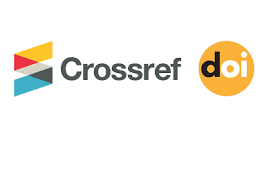Upper Palaeogene-Lower Neogene Reservoir Characterization in Kirkuk, Bai Hassan and Khabaz Oil Fields, Northern Iraq
DOI:
https://doi.org/10.25130/tjps.v21i3.1001Abstract
The Upper Palaeogene-Lower Neogene succession represent subsurface sections from Kirkuk, Bai Hassan, and Khabaz oilfields were divided to many reservoir units dependent on information derived mainly from petrographical description, well log analysis, and related microfacies. In Khabaz oil Field, the hydrocarbon reservoir includes three reservoir units covered the Jeribe Formation, Anah Formation with its interfingering zone with Azkand Formation and Azkand Formation, the total thickness of this reservoir reaches up to (128 m) with net pay thickness of about (85.7 m) and net average porosity of (0.096) while the net water saturation is (0.185), the volume of shale is (7.130). The hydrocarbon reservoir in Bai Hassan was represented by three reservoir units comprised from the Bajwan and Baba formations, the total thickness of this reservoir is (178 m) with net pay thickness of (154.2m) and net average porosity of (0.121) while the net saturation is (0.156), the volume of shale is (36.837). Four reservoir units comprised the hydrocarbon reservoir in Kirkuk Field where they covered the Bajwan, Baba, Shurau and Sheikh Allas formations. The total thickness of these reservoirs is (136 m) with net pay thickness (124.5m) and net average porosity (0.178) while the net water saturation is (0.159), the volume of shale is (5.82). Many types of porosity were associated with these reservoirs such as the interparticles, intraparticles, intercrystaline, fracture, channel, moldic, vug, and cavern porosities. These porosities are attributed to a combination of dolomitization, fracturing, and dissolution.
Downloads
Published
How to Cite
Issue
Section
License
Copyright (c) 2023 Tikrit Journal of Pure Science

This work is licensed under a Creative Commons Attribution 4.0 International License.
Tikrit Journal of Pure Science is licensed under the Creative Commons Attribution 4.0 International License, which allows users to copy, create extracts, abstracts, and new works from the article, alter and revise the article, and make commercial use of the article (including reuse and/or resale of the article by commercial entities), provided the user gives appropriate credit (with a link to the formal publication through the relevant DOI), provides a link to the license, indicates if changes were made, and the licensor is not represented as endorsing the use made of the work. The authors hold the copyright for their published work on the Tikrit J. Pure Sci. website, while Tikrit J. Pure Sci. is responsible for appreciate citation of their work, which is released under CC-BY-4.0, enabling the unrestricted use, distribution, and reproduction of an article in any medium, provided that the original work is properly cited.













